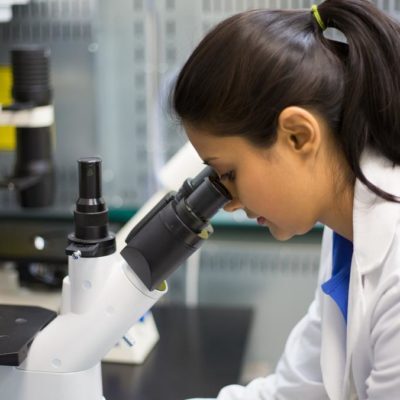Computers in Drug Discovery is now becoming mainstream. For over 40 years X –ray crystallography has been recognized as a standard for viewing three dimensional structures of proteins. This provides a detailed description of arrangement of atoms in a molecule, which in turn helps understanding how proteins perform their chemical function and thus relating them to the biological action they influence and the molecules they can bind with.
This detailed approach rationalizes the drug discovery process by generating an understanding of the structure of the protein and the molecules it can bind with. With this approach the structure of the protein can be modified to improve specificity, affinity and performance.
With the introduction of computers in the field of drug discovery, any structure can be screened against a library of compounds to find one that can bind to that protein. Such methods have successfully been used in various drug discovery projects, so much so, that large to medium pharmaceutical companies today have a separate protein crystallography group as a part of their drug discovery operations. Several new companies are also venturing into this area of structure based drug discovery utilizing computational methods.
Table of Contents
Computers in Drug Discovery
There are three main contributions of structural methods in the drug discovery process – structural biology, structure based design and structure based discovery.
Structural Biology
This method has more to do with determining the structure of a protein target and then relating it to the biological activity and therapeutic role. The combination of modern biology and computational methods it is now possible to generate structures of a large number of therapeutically important targets such as nuclear receptors, metabolic enzymes and key proteins in the life cycle of bacteria and viruses. However this area is mostly dominated by experimental biology as of now.
Structure based design
This is a method by which the interactions between a ligand (a compound being considered as a prospective pharmaceutical product) and a target protein can be studied and necessary alterations can be made to the structure of the ligand so as to increase its affinity, specificity of action or reduce its toxicity etc.
All this has been made simpler by using computational methods to simulate the interaction between the ligand and the target protein and to modify structure of the ligand computationally and then observe its affect. The drawback here is that the ligand (with the altered structure as per the best possible computational conformation) always cannot be experimentally made or does not exist.
Structure based discovery
This is the method of drug discovery that best fits and used the computational model. Since the number of compounds whose structures were known grew in the 1990s, a database was available to search which compounds best fitted a target. This led to the concepts called Virtual Screening, De Novo design and Fragment based Discovery.
Virtual Screening
This is a method which uses computational docking to assess which of the compound out of a large database of compounds will fit into the structure of the target protein. With the current computational methods used today this is 80 % successful however there are a large number of false positive hits generated too in this process.
De Novo design
This method follows an opposite process than screening. It attempts to use the structure of the target protein to design novel chemical structures that can bind to that target protein, Again the major issue here is to create structures that are possibly to be experimentally made.
Fragment based Discovery
Thus method is based on the theory that most ligand that bind to any target protein’s active site can be considered as being made of small fragments or functionalities. Therefore if we screen a small library of compounds/molecules and find out fragments of these compounds that fit well into any fragment of the target protein, then these can be isolated and merged with other fragments to create a fully functional active compounds that fits well with the target protein. The main issue faced here is to design a library that is diverse and to combine/ add additional functionality to the isolated targets.
Computers have an undisputed role in the above processes. The importance of computers in this field especially grew with the evolution of graphics in computers. The first important event was in the 1950s with the determination of the structure of Vitamin B12 using analog computers.
In the 1960s there was advancement in molecular graphics and the first multiple-access computer was built by MIT, however this was only available for large institutions. The 1970s saw large centres acquire computers for crystallographic work and the emergence of the first laboratory computers.
In the 1980s protein crystallography started being used and accepted as a technique in the pharmaceutical and biotechnology industries and was dominated by the used of laboratory based, multi-access computer systems. The 1990s phase was completely dominated by silicon graphics that provided computational and graphics performance available to all laboratories.
The phase of the 2000s introduced Linux operating system on PC workstations and steady improvement in data collection and processing hardware (such as the crystal robotic mounting hardware) and software for processing. Also there has been heavy investment in the structural genomics for streamlining the production of proteins for structural studies and determination of structures.
Although the computational structural methods have begun to deliver real successes for drug discovery pipeline, the real issues that still hinder its path are the availability of a computational bioinformatics environment to streamline calculations, effective integrations of computational methods and data that are generated into the drug discovery process.
For a deep insight into the world of pharmaceutical research and development, subscribe to our Clinical Research Knowledgebase
Want a explore a career in Pharmaceutical Research and Development? Join our Diploma in Clinical Research program and kick-start a career in Clinical Research.




